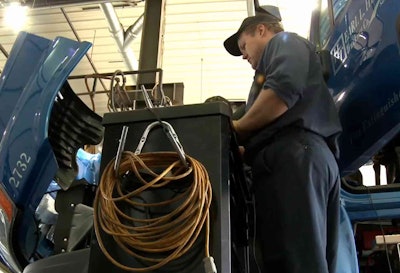
But it’s not easy.
Building a documentation strategy for your operation requires a willingness to dedicate time before, during and after a crisis to making your business better.
The first step in recording a critical event actually comes well before an event occurs — you have train your people on the importance of documentation, says Chas Voyles, regional manager of fleet services at Navistar, and chairman of the Technology and Maintenance Council’s Service Provider ‘Conflict Resolution’ task force.
Customers don’t give lead time on complaints. When something goes bad you hear from them immediately, and in most cases they expect immediate support.
Training an employee to withstand an angry customer’s first call puts you on the right track to a resolution, but unless they also are trained to record what they’re doing in those early moments, you are at risk of losing valuable information.
Voyles says there’s a benefit to knowing how an employee handles an initial complaint for training and reference purposes, especially considering the circumstances.
“Their mind is going a million miles an hour,” he says.
Training also can ensure your staff knows how to record different aspects of a conflict.
Fielding a complaint from an agitated customer can be an overwhelming task. You don’t want to make it any harder on your employee by requiring them to record too much, says Kenneth Calhoun, vice president of customer relations at Truck Centers of Arkansas.
“In our industry everything comes at us at a very, very high rate of speed,” he says. “We simply don’t have the manpower and available time to record everything. We have to create repeatable systems that offer simple and easy ways to record [those interactions].”
An easily accessible list of dos and don’ts can offer your employee valuable support during the first minutes of a call, adds James Williams, senior director of vendor relations at FleetNet America.
From there it’s just a matter of employees sticking to their training, he says. Not everything your employees and customers say must be recorded verbatim — though if you have the technology to record phone calls Williams strongly recommends using it — but all important points regarding customer complaints and your team’s responses should be recorded, along with the time and date, in your management system.
This information should then be passed along to your customer as the situation progresses.
This is incredibly important, Williams says, because it shows your customer you are dedicated to solving their problem, and offers indisputable proof that you have taken action.
One of the worst things a service provider can do during a conflict is tell a customer they will ‘fix it’ but not update them on how, Voyles says.
When a customer is angry they need reassurance, they need to know you’re doing something, he says. Providing documentation allows them to see the steps you’re taking to make things right.
![[ + ] click to enlarge](https://img.truckpartsandservice.com/files/base/randallreilly/all/image/2014/09/tps.dosdonts.png?auto=format%2Ccompress&fit=max&q=70&w=400) [ + ] click to enlarge
[ + ] click to enlarge“Nobody gets it right every time,” he says. “What’s important is that you look at your flaws and you try to get better.”
These meetings also allow you a chance to tinker with your dos and don’ts and recording methods for future conflicts.
“That’s big for us,” says Williams. “We know the importance of not continuing to make the same mistake.”
Then once you’re done reviewing your records you want to make sure they’re easily accessible.
Whether they are in your department management system or in an old-fashioned filing cabinet, records need to be easy to find. You never know how long it’s going to be until that customer comes back with another complaint, or another customer has a similar problem.
And remember, simplicity helps.
Irritated customers are stressful enough; don’t let your recording process cause your team any additional anxiety.
“One thing we have to be cautious about in our industry is we don’t administrate ourselves to death,” says Calhoun. “We can’t get bogged down trying to record these events and add even more to our plates. [Event] recording has to be something we mesh seamlessly into our operation.”










